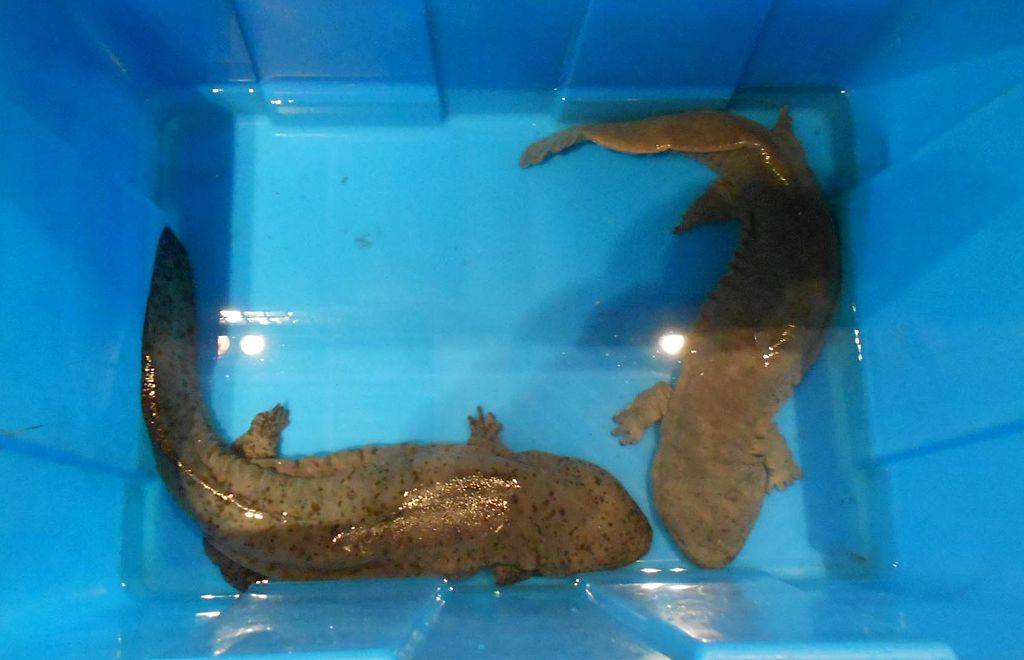
The Chinese Giant Salamander
Chinese giant salamanders (Andrias davidianus) for sale in a restaurant in Hongqiao, Wenzhou, Zhejiang, China. The price was 130 USD/0.5 kg. Image credit: Micromesistius
The species is also of special concern for its unique biology and evolutionary history. Despite being a fully aquatic animal, the Chinese giant salamander has a single lung that is primarily utilized for maintaining buoyancy in the water. However, it can also be used for breathing as the species has been observed to come to the water’s surface to inhale air in large quantities. This makes the animal one of the few species of salamanders that can breathe through both its skin and lungs, allowing it to thrive in both aquatic and terrestrial environments.
The Chinese giant salamander has tiny, nearly invisible eyes atop its head, resulting in poor vision. Yet, it compensates for this with a lateral line, which helps it locate fish in water. These animals produce sounds that resemble a baby’s cry, earning them the ironic (and inaccurate) nickname “baby fish.”
Additionally, the Chinese giant salamander is considered a “living fossil” and has remained largely unchanged for millions of years, making it an important species for understanding the evolution of amphibians.
The species is also of special concern for its unique biology and evolutionary history. Despite being a fully aquatic animal, the Chinese giant salamander has a single lung that is primarily utilized for maintaining buoyancy in the water. However, it can also be used for breathing as the species has been observed to come to the water’s surface to inhale air in large quantities. This makes the animal one of the few species of salamanders that can breathe through both its skin and lungs, allowing it to thrive in both aquatic and terrestrial environments.
The Chinese giant salamander has tiny, nearly invisible eyes atop its head, resulting in poor vision. Yet, it compensates for this with a lateral line, which helps it locate fish in water. These animals produce sounds that resemble a baby’s cry, earning them the ironic (and inaccurate) nickname “baby fish.”
Additionally, the Chinese giant salamander is considered a “living fossil” and has remained largely unchanged for millions of years, making it an important species for understanding the evolution of amphibians.
Advertisements
17 August 2023
Advertisements



